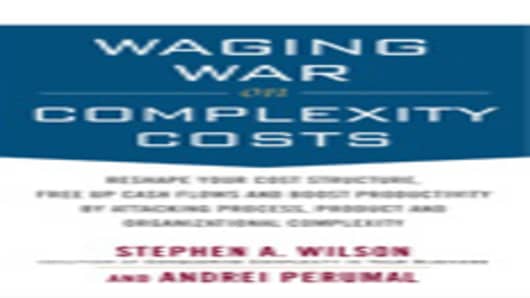When Cadbury responds formally to the bid on Dec 14, management of the UK-based confectioner may point to recent results to bolster its case that the current offer is inadequate.
Cadbury’s result exceeded even the most bullish of expectations in both growth and margin. Kraft, on the other hand, underperformed expectations, doing little to deflect the moniker that Cadbury Chairman used in the September rejection letter to Rosenfeld, that of a “low growth conglomerate business model.”
So how did Cadbury achieve a 7% growth rate in a downturn, and what can others learn from this?
Key to its capture of increased margins and growth has been a recent focus on taking complexity out of the business, as we describe in our new book, Waging War on Complexity Costs (McGraw-Hill).
“Given the way the business has developed,” said CEO Todd Stitzer at the outset of its complexity initiative, “Cadbury is more complex than it needs to be: the way we’re organized, our factory footprint, and the number of different product formats we produce.”
The company’s response to this state of affairs was a multi-pronged effort to simultaneously consolidate assets, cut SKUs, and eliminate organizational layers and process duplication – attacking product, process and organizational complexity. The company needed to take action:
“How about this for complexity?” said Stitzer, citing the UK as an example. “In 2007 Cadbury UK had 8 production/feedstock plants, 18 stockholding locations, around 6,000 employees, 30 key brands across chocolate, candy and gum. And through the course of the year handling more than 1,000 different pack types or SKUs.”
To address these issues, Cadbury’s structured a three-part integrated approach. In the UK that meant:
- Footprint reconfiguration – reducing the number of distribution depots from 18 to 5;
- Organizational simplification – moving from a siloed organizational structure where brands and categories were managed on a market by market basis to one with fewer layers, managed along category lines (chocolate, candy and gum). The company reported that because “each category team includes sales, marketing, production and finance,” decisions were made more quickly, and thinking was more “joined-up” with a subsequently more coordinated focus on revenue and margin growth. The company claimed that this allowed it to reduce G&A headcount by 15%. Further, Stizter claimed that the “joined-up approach” resulting from the organizational simplification was critical to successful execution of SKU reduction, which they undertook with seriousness.
- SKU reduction - in one particular category, they cut SKUs by 75% to 26, raising margins in line with the rest of the seasonal portfolio. Overall across Cadbury, the company cut about 10% of SKUs in 2008.
The insidious impact of complexity in a downturn
In our experience, as we’ve seen with Cadbury, when companies cut complexity, they grow. That’s the carrot. But many firms are postponing the tougher decisions. So we should make mention of the stick – the devastating impact of complexity on profitability in a downturn.
The fortunes of many companies depend upon what we call “islands of profit in a sea of cost” – for example, it is not unusual for 20%-30% of a company’s products to generate more than 300% of profits. The remaining 70%-80% lose 200% of the profits. Companies sometimes treat this segment like a tax. This is wrong-headed, but it reflects the fact that many companies consider organizational, process and product complexity to be intractable issues. (They’re not, we should note, as we describe in our book.)
But with such concentration of profit, comes great sensitivity. And therein lies the issue: keeping complexity in the face of a contraction concentrates the cost of that complexity over less revenue, making complexity “more expensive” and magnifying its impact more than ever. The result is that the profitability doesn’t simply scale down proportionally with revenue loss but rather crashes. The islands end up submerged.
If Kraft wins its bid for Cadbury, it will have access to fast-growing brands and broadened geographic reach.
But it would also do well to hang onto – and evangelize – the confectioner’s ethos of Fewer, Faster, Bigger and Better.
It’s the path to profitable growth.
- News Update: Cadbury Workers Unite to Resist Kraft's Bid
_____________________
Stephen A. Wilson (swilson@wilsonperumal.com) and Andrei Perumal (aperumal@wilsonperumal.com) are co-authors of Waging War on Complexity Costs, published byMcGraw-Hill and are Managing Directors with management consultancy WilsonPerumal.
__________________________
Do you have a book suggestion?
Email me at bullishonbooks@cnbc.com — And follow me on Twitter @BullishonBooks



